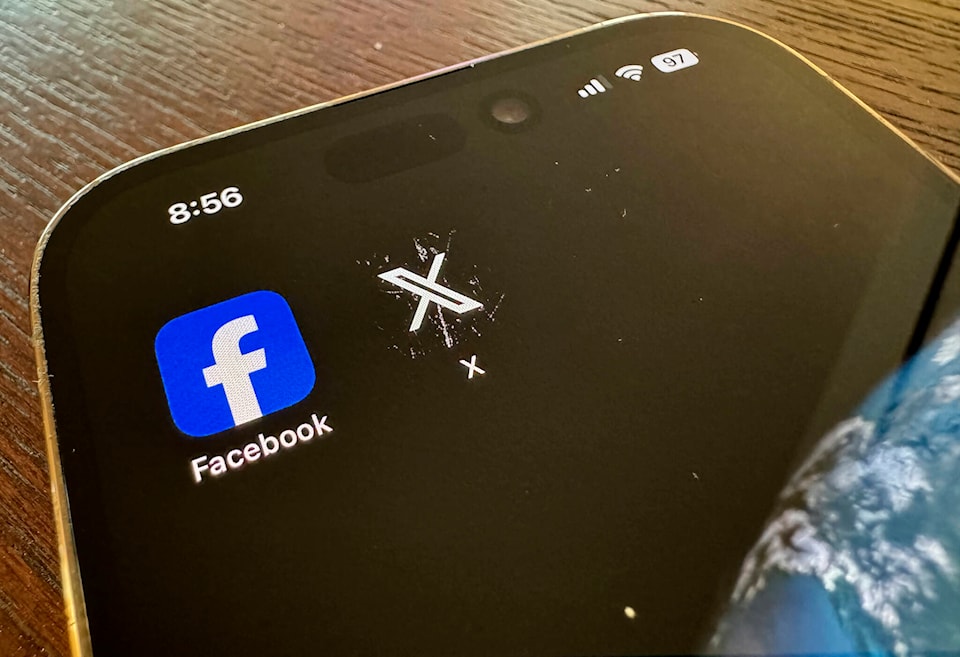A man has been ordered to pay $5,200 to another man after sharing his nearly nude images with at least one other person on social media.
Civil Resolution Tribunal vice-chair Eric Regehr ordered MW to pay $5,000 in damages and $200 in tribunal fees to BDS for sharing intimate images of BDS, according to the decision released April 30. Both men’s names are protected under a publication ban.
MW and BDS never met in person, only interacting via direct messages on X (formerly Twitter). The interaction was brief, Regehr said, all taking place on March 21, 2021.
Regehr said the chat was flirtatious and both men shared images – some nude and some not.
In the two disputed photos, one shows BDS “shirtless and in tight underwear with the outline of his erect penis clearly visible,” while a second photo was taken from the side showing BDS “pulling his underwear down to expose parts of his buttocks.”
Regehr said there was no evidence anything happened with the photos until April 2023.
Around April 6, 2023, MW said he came across an X post from a person called EH that claimed she was being harassed by another X user who allegedly called her “human garbage, “monstrously evil,” a transphobe and deranged.
MW said he recognized the accused account as BDS, and contacted EH to identify the account so she could pursue legal action against him. He also contacted another person, a lawyer who represented several women who claimed BDS had harassed them online, and shared BDS’s name and some photos with them as well.
Both MW and EH initially told the tribunal that MW shared with EH cropped photos of BDS that only showed his torso and face. Neither initially provided screenshots of their direct messages, and BDS asked Regehr to order X to provide MW’s message history.
EH eventually was able to provide screenshots of her entire conversation with MW. In the screenshots, it showed MW shared the BDS underwear photo and the buttocks photo, with neither imaged cropped to just the torso and face.
MW sent three additional photos to EH of BDS that were originally nudes, but had been cropped.
B.C.’s Intimate Images Protection Act came into effect on Jan. 29, which defines an intimate image as sexual, nude or nearly nude with a person having the reasonable expectation of privacy when the image was recorded, livestreamed or shared.
This was the first published decision since the Intimate Images Protection Act came into effect on Jan. 29, but the tribunal has already made more than 30 decision under the act since then.
READ MORE: Attorney general alerts online companies to B.C.’s new image-sharing law
Regehr said the act doesn’t define nearly nude and is “somewhat ambiguous,” but the term nearly nude is not characterized by the amount of clothing alone, but also the context of the image.
“Footage from a changeroom of a woman trying on a bikini would likely be an intimate image, whereas a photo of a public beach that includes a distant shot of the same woman in the same bikini likely would not be.”
Regehr said that while BDS’s underwear in the first photo is small, but not more revealing than many swimsuits, “the photo is very different than a photo of a man at the beach.”
“It is taken for a flirtatious or seductive purpose. The outline of BDS’s erect penis is plain to see. Anyone seeing the photo would immediately recognize that it depicts a sexualized and private moment.”
He said the same could be said for the buttocks photo, adding that BDS had a reasonable expectation of privacy when taking and sending the photos to MW.
In his decision, Regehr also ordered MW and any other person who shared the photos of BDS to delete or destroy copies, as well as make every reasonable effort to make the photos unavailable to others.
